On Sunday, September 28, 2014 a group of Eco-Interns at the William C. Velazquez Institute had the opportunity to collaborate with the Los Angeles Waterkeeper’s citizen science program. Four of us went aboard the LA Waterkeeper boat and learned how to monitor marine protected areas with Michael Quill, MPA Watch Program Manager.
MPA Watch trains people to survey their local “underwater park” to see what kinds of activities are taking place. Marine protected areas are special zones in the coastal ocean designed to protect sea life. They limit fishing while allowing tidepooling, surfing, boating, birdwatching, diving, etc.
In January 2013, a network of marine protected areas was established in Southern California to keep our ocean healthy. Two areas along the Los Angeles coastline were protected because they provide feeding and breeding grounds for fish and other animals, and are easily accessible to the public. They include Point Dume and Point Vicente-Abalone Cove.
It’s important for Angelenos to know about marine protected areas in order to know how to improve the environment around them and have access to safe and healthy fish. These protected areas are helpful because they preserve kelp forests and rocky reefs that attract certain endangered marine species and keep a healthy marine life. They also teach and inform us about the importance of taking care of the sea. This experience taught us about the effect we could have if we help and do our part.
“The most interesting thing I observed in this trip was the growth of the kelp around the protected areas. I found that to be pretty amazing by the size of the kelp and how useful it is to the marine life.” Pedro Roque – WCVI Eco-Intern
The most fun part of the boat trip was observing the giant kelp and getting to see all the life there was around us. According to LA Waterkeeper: “the giant kelp forest, home to more than 800 species, has been reduced by 75% over the past 100 years as a result of hunting, over fishing and pollution in Los Angeles. This has left the sea urchins with very few predators and uncontrolled populations, creating an ecosystem imbalance. Sea urchins dominate the rocks rather than kelp and hundreds of species are displaced or diminished.”
During the trip we got to experience some of the marine life of the Pacific Ocean including beautiful dolphins and a couple of sea otters. It was pretty amazing because we had never been around or as close to so many dolphins.
The work we did at the Los Angeles River and marine protected areas is deeply connected as both work towards preserving natural resources. The water from the Los Angeles River ends in the ocean and its quality can negatively or positively affect the habit.
The Los Angeles River Eco-Intern Program helped us grow in many ways. We now view the world around us in a different perspective. We learned the importance of taking care of the habitats around us and how fortunate we are to have them. We now make more responsible decisions around our carbon footprint and how we can have a positive effect on wildlife. We also grew as scholars as our minds were opened to different careers that we might want to pursue in the future and the difference we could make.
By Kimberly Cabrera, Senior at Esteban E Torres High School and Pedro Roque, Senior at Cathedral High School
For more information about the William C Velasquez Institute and Eco-Intern Programs you can visit: ww.wcvi.org
For more information about the Marine Protected Areas Watch Program you can visit: www.lawaterkeeper.org/marine-protected-areas/



